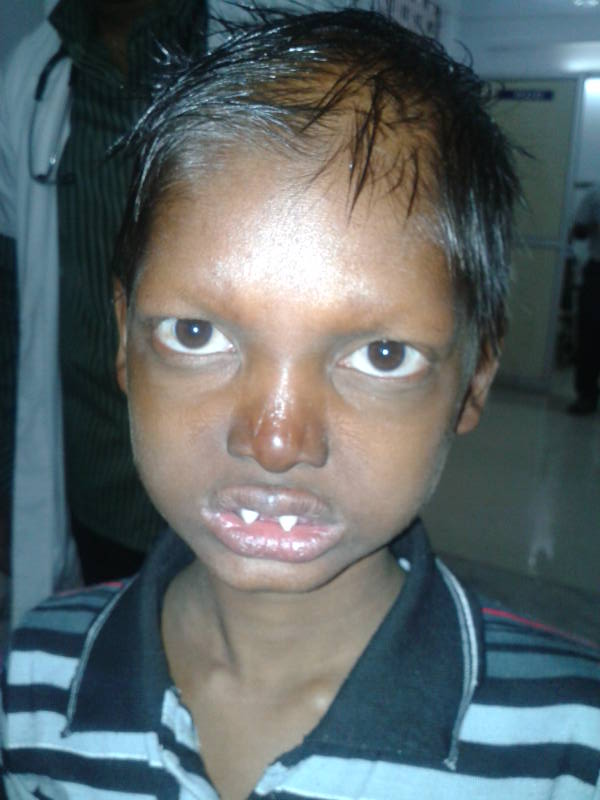Ectodermal Dysplasia Syndrome

The term ''ectodermal dysplasia'' defines a heterogeneous group of heritable disorders of the skin and its appendages characterized by the defective development of two or more ectodermal derivatives, including hair, teeth, nails, sweat glands and their modified structures (i.e. ceruminous, mammary and ciliary glands). The spectrum of clinical manifestations is wide and may include additional manifestations from other ectodermal, mesodermal and endodermal structures.
Epidemiology
Overall prevalence of ectodermal dysplasia syndromes is unknown, but appears rare with a presumed cumulative incidence of approximately 1/1,429. More than 120 clinically and/or genetically distinct ectodermal dysplasias have been cataloged.
Clinical description
In ectodermal dysplasias, the skin usually appears dry with superficial scaling and proneness to dermatitis. Hair is often sparse (i.e. hypotrichosis) and slow-growing, with a tendency towards congenital or early-onset non-inflammatory alopecia. Teeth are slow-growing and defective in number (i.e. hypo-, oligo- and anodontia; see these terms); they are often dysplastic (i.e. peg shaped) and display enamel dysplasia. Nails manifest a wide range of features, comprising but not limited to dystrophic, thickened, and absent nails. Eccrine glands may be reduced in number or totally absent leading to hypohidrosis and anhidrosis, respectively. Hypoplastic breast and nipples and stenosis or agenesis of the lachrymal ducts are further manifestations of sweat gland involvement. A wide range of additional ectodermal features, such as achantosis nigricans (see this term), hyperkeratosis of the palm and soles, and skin hamartomas/neoplasms may be observed. Although many ectodermal dysplasias are disorders with manifestations limited to the skin, hair, teeth, nails and sweat glands, multiple features of ectodermal dysplasia are accompanying signs of many syndromic conditions with systemic involvement.
Etiology
Over 53 genes and 3 chromosome regions are responsible for the majority of ectodermal dysplasias as different phenotypes may result from mutations in a single gene.
Diagnostic methods
The present classification of ectodermal dysplasia syndrome is based on clinical features although a genetic classification, just as significant, has been proposed on the basis of gene function.